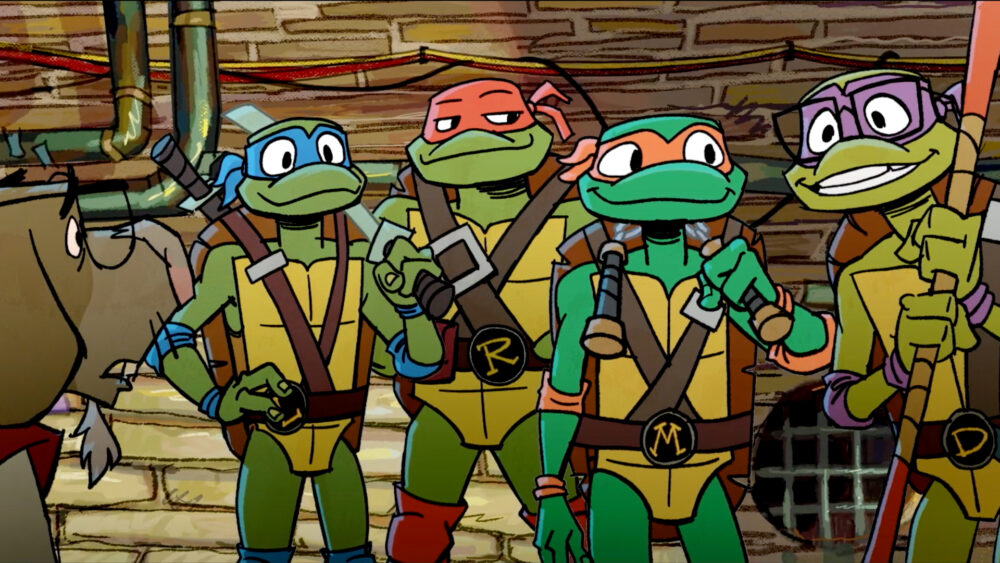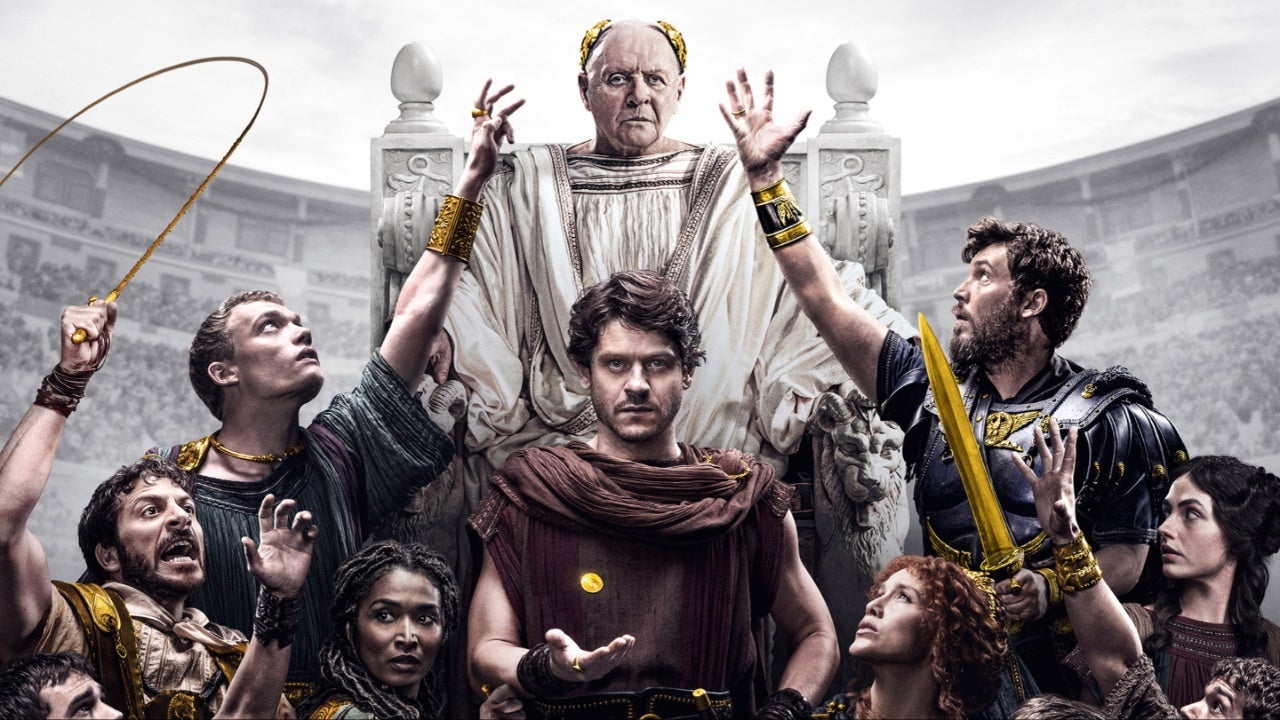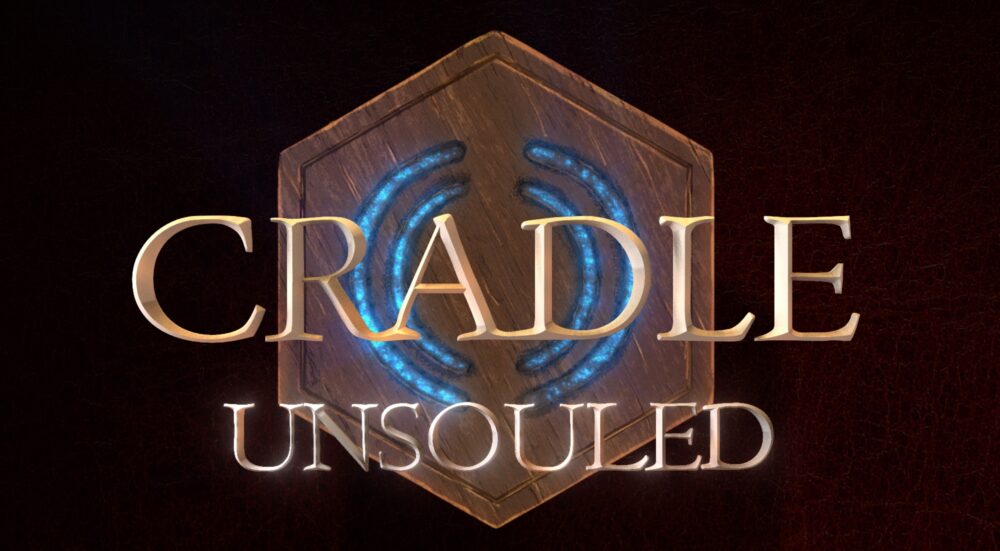I think I’m in love with Margot Robbie but she doesn’t know it……yet. She was great in The Wolf of Wall Street and she nailed that NYC accent. She was a badass pigtailed blonde bombshell with an assortment of melee weapons kicking ass and chewing bubble gum in Suicide Squad. Now she’s playing a foul-mouthed, white trash girl from the trailer park in a Tonya Harding biopic that’s getting great reviews. I really, really want to see this film.
So I go to my local multiplex and what do I see; The Last Jedi playing on four screens, Justice League on three screens, Thor on two screens and Daddy’s Home 2 on one screen. This leaves just two auditoriums left in this multiplex and one of those is showing Disney Pixar’s Coco. Pixar whose name has become synonymous with computer animated excellence has made a name for them that pretty much carries the same weight as a franchise. Needless to say I’m just gonna have to wait till I, Tonya gets a wider release because ten out of twelve screens in this multiplex is showing franchise films.
That’s 83% of all screens in this one multiplex dedicated to screening franchise films. I wonder if this stat is indicative on a national level, if 83% of all screens in the U.S. are screening franchises. Most likely not that high, but I’m sure at the very least, franchises are still playing on the majority of U.S. screens. One can surmise that franchise films stand a much better chance at making money than non-franchise films. Forget the quality of the film; franchises already have an advantage at the starting gate based on distribution rights alone. When you start to factor in the fan base and marketing campaigns to some of these franchises, it’s no wonder why it’s hard to catch an indie film in the theater.
It is this logic that keeps the Hollywood machine running. Franchise films are the safest investment to a Hollywood exec. This is why so many of them are green lit. While cast and crew members are sweating bullets from the intense heat those lights give off on set, some Hollywood fat cat is relaxing in a nice air conditioned office overlooking a waterfront skyline. All the while he’s got the tune of that old O’Jays song, ‘For the Love of Money’ stuck on repeat in his head. Also the sound of cash registers opening and slamming shut after each transaction rings out. The funny thing is though, if money is so important to people like this, then why are they supporting and investing in films that are assuredly not going to be the highest grossing film of all time?
The sound that’s probably running thru your head now is the sound of a record player scratching followed by a moment of silence followed by crickets chirping. Yes, you read that right. As successful as franchise films are at the box office time and time again, they continue to fall short of becoming the highest grossing film of all time. Why? Hollywood conventional wisdom will tell you that a franchise film is most likely going to wear the box office crown. However that is not true and hasn’t ever been true or at least hasn’t been true for the last forty years. This has been a Hollywood conundrum for some time now. In the last forty years, only three films have claimed the title: Highest Grossing Film of All Time; Star Wars (1977), Titanic (1997) and Avatar (2009). Star Wars was released in 1977 and did not become a franchise until 1980 when The Empire Strikes Back was released. So for all intents a purposes, Star Wars was not a franchise when it was crowned as king in 1977. Same goes for Avatar; it is not a franchise yet until the sequel drops. Hence, no franchise film has ever become the highest grossing film of all time. There’s a reason for that.
It seems that Hollywood executives are like those football coaches that are more concerned with not losing the game than they are with winning the game. The choice to back a franchise film or an original story is like choosing between a running play and a deep pass downfield. The idea is that backing a franchise film and committing to a running play is much safer but will yield a smaller gain than the more risky original story and a deep passing play. Pardon the football analogies, it’s the end of December, the NFL playoffs and NCAA bowl games are on the horizon and it’s crunch time. If becoming the box office champ like Avatar is like playing football, why do the usual suspects like Avengers, Star Wars and The Fast and the Furious usually make the playoffs but always come up short of winning the Superbowl? What can be attributed to this? My answer is quite simple and it’s the very same reason why Hollywood execs and box office analysts think that a film will wear the crown: the fan base, pure and simple.
Sorry if this revelation isn’t as mind-blowing as you thought. A solid fan base is requisite for the success of franchise films but I believe it is detrimental to wearing the box office crown in that a fan base will limit a franchise film’s potential success. Let’s examine this closer. Basically the nature of the franchise film works like this. A film like Star Wars: A New Hope is released. Word around the campfire says there has never been anything like it before and that everyone should go out and sees it. Everyone including their old wrinkly, gray-haired grandma goes out and sees it. Star Wars goes on to become the highest grossing film of all time bringing in an amazing $307 million at the domestic box office in 1977. By the time 1980 comes around Empire Strikes Back comes out, and everyone goes out and sees it. This time around however, wrinkly gray-haired granny chooses to stay home because she has already seen a film like this before and space operas are not her cup of tea. Thus the fan base has been established at the same time a lack of interest outside the fan base is also starting to form. Even though at this point The Empire Strikes Back had a pre-existing fan base, the lack of interest outside the fan base caused it to only bring in $209 million at the domestic box office instead of $307 million or better.
Hollywood logic would have you think that a pre-existing fan base should ensure a comparable or greater box office return. That’s not bad logic but probably true less than 50% of the time and downright false if you’re talking about the box office crown. Though I will say, the industry has changed considerably since 1980. At that time there were probably only a few franchises that data could be compiled from. James Bond, The Pink Panther, The Godfather, Jaws, The Exorcist and The Omen. Richard Donner shot Superman 1 & 2 concurrently in 1978 but the sequel wasn’t released until 1981. These are the only franchises that come to mind as far as pre-1980 franchises go. I’m sure I’m forgetting a few but the point is, we know much more today than we did back then. By 1980 when Empire dropped, it officially made Star Wars a franchise. No, it made it THE franchise; THE franchise in which ultimately became a blueprint for success for the modern Hollywood machine. But what has Hollywood really learned about the fan bases their films have spawned? I mean Empire Strikes Back did come in over $100 million short of Star Wars which is $300 million today with inflation.
Don’t get me wrong, $209 million is a hell of a lot of money back in 1980. However, if trying re-capturing that magic or trying to outperform the predecessor was the goal, then coming up $100 million short was a major miscalculation. What caused this? The misunderstanding about the nature of franchise films and their fan base caused this. The now established and limited fan base caused this. Sure there are many exceptions where a sequel will perform better at the box office than its predecessor, but none, and I mean none went on to become the highest grossing film of all time. A fan base is usually established because people have come to like and want to see a continuation of the story, characters, cool set designs, costumes, dialogue, special effects, action, violence, nudity or whatever made that first film so appealing.
However, there are inevitably going to be a few people who didn’t care for the story, or characters and also the sex and violence was off-putting. So already at this point there’s a consensus building whether or not to see the next film in the franchise. In short, when a set of likes is established, simultaneously and conversely a set of dislikes is also established. Ask yourself how many people do you know that will avoid Star Wars like the plague BECAUSE it’s Star Wars but will be first in line for the next Bridget Jones film.(I was unaware there were three films in that series until I literally wrote this paragraph) Or how about your girlfriend who refuses to go with you to see the next film in the Saw series because it’s sick an depraved but goes shopping at Lovers Lane and brings home whips and chains because she went out to see the next Fifty Shades film.
Currently there are 31 films that have grossed over $1 billion at the worldwide box office. I call this exclusive group The Three Comma Club (I stole that from Silicon Valley). Of the films in The Three Comma Club, 27 films belong to twelve franchises and only four films are original stories or at the very least, non-franchise films. These films are Zootopia, Frozen, Titanic and Avatar. Other than being non-franchise films, what else makes these films unique?
For starters Zootopia and Frozen are both computer animated Pixar films. I had mentioned before the name Pixar has almost the same impact as a franchise film. This could have definitely helped out at the box office. Avatar and Titanic are both James Cameron films. Thanks to films like Aliens, The Abyss and Terminator 2; James Cameron has become synonymous with groundbreaking technology and big budgets that may have helped drum up interest. By these four films in The 3 Comma Club being non-franchise, they didn’t have a pre-existing set of dislikes working against it like franchise films do. Therefore their success was not bound by the limitations set forth by a fan base.
This brings up another anomaly. These four films all performed exceptionally well. Uh duh, they’re in The Three Comma Club aren’t they? There are different degrees of performance at the box office and different ways to measure and predict success. For a lack of a better term, I call it “the drop” or how much ticket sales decline from one week to the next. Most films and even some of the most successful franchises are not immune to the industry accepted average drop of 50%. It’s actually more like 52% but for this purpose we’ll just say half. Whatever a film grosses opening weekend that film most likely will make half or drop by 50% the following weekend. I have come up with a rudimentary metric for box office performance. A film is performing “good” if the drop is 45% or lower. A film is performing “average” if the drop is between 45% – 60%. A “poor” performing film drops more than 60% from one week to the next.
For example: Marvel’s The Avengers smashed the opening weekend record with $207,438,708. Though it had a record breaking opening, its box office performance was just average. The second week yielded $103, 052,274 for a text book drop of 50.3%. Batman v Superman had a great opening weekend of $166 million but performed poorly over the second weekend bringing in only $51 million for a 69% drop. So what’s an example of a movie that performs “good”? What if I told you that a film that only grossed $77 million opening weekend ended up making more than The Avengers($1.518 billion) and Beauty and the Beast($1.263 billion) combined!
As hard as it is to believe, Avatar had a fairly disappointing opening weekend. However, and this is the ultimate reason why it’s wearing the crown, its box office performance was “superior”. It grossed $75 million over the second weekend for a 1.8% drop! The third weekend it made $68 million for a 9.4% drop. In fact, it didn’t drop 50% until the 16th weekend. Also it had six weekends where it actually made more money that weekend than it did the previous weekend. No franchise film has ever performed like this.
Notice how I said franchise film. There was another film that was anomalous like Avatar and it makes sense that it was made by the same filmmaker; James Cameron’s previous film Titanic had an anomalous performance like Avatar. Yes, James Cameron broke his own record with Avatar. It being 2017 now, and knocking on 2018’s door, James Cameron will finally surpass George Lucas by entering his twenty-first year wearing the crown by two different films. Lucas wore the crown from 1977-1997 then passed the torch to Cameron who’s been wearing it ever since.
Titanic opened in 1997 on 2,674 screens which is 1,675 less screens than The Avengers. It grossed $28 million opening weekend which is $179 million less than The Avengers opening weekend. Titanic went on to make $1.8 billion which is $300 million more than The Avengers total worldwide gross because of its “superior” performance. The second weekend Titanic didn’t even drop, it rose to +23.8% bringing in $35 million. In fact, Titanic didn’t even drop below what it grossed opening weekend until its sixth weekend bringing in $25 million which is still only a 10% drop. Titanic finally dropped more than 50% on its thirty-eighth weekend. It had eight weekends where it made more money than in the weekend prior. These are the kinds of numbers that are requisite for the box office crown.
Now Titanic and Avatar performed on an unprecedented level and really should be in a class of their own. Let’s take the other two original films of The 3 Comma Club and compare them with their fellow club members. Zootopia when compared to Furious 7($1.5 billion) under my definition performed “good”. It didn’t fall into the “average” performance until week 13 whereas Furious 7 dropped 59% on week two. Fell another 51% for week 3. It had four weeks where it has “average” drops and one weekend of a “poor” drop. Because of its frontloaded performance, it was pulled from the theatres in just eleven weeks. Zootopia was much leggier and played in theatres twice as long for twenty-two weeks. In those twenty-two weeks, Zootopia had sixteen weeks of “good” performance, three weeks of “average” performance and just two weeks of “poor” performance at the tail end of its theatrical run. Frozen played in the theatre for thirty-four weeks. It had twenty-nine good performing weeks, four average and one poor.
What do these numbers mean? What do they suggest? Well it’s hard to say what exactly what motivates people to go out to the theatre. Do people go see it opening weekend? Do they wait until they can get tickets in IMAX 3D? Do they wait a few weeks till the crowds die down? Though, when I see numbers like -35% in weeks four, five and six, it suggests to me strong word of mouth. People liked the film and are themselves going back to see it a second time or the word is spreading that people are digging this flick. This year’s Wonder Woman starring Gal Gadot (I’m in love with her too, shh, she doesn’t know it yet either, please don’t tell Margot) surprised a lot of people. First it broke expectations making more than $100 million at the domestic box office opening weekend, and then in the following weeks it dropped only 43.3% for week two, 29.5% for week three, 39% for week four, and 36.9% for week five. In fact, Wonder Woman’s first fourteen weeks were considered “good” or above average.
Films that have big opening weekends tend to be bigger budgeted franchise names. This is usually because there is a good amount of money invested in it already and can afford a flashy marketing campaign. The weekend makes up about 60-65% of what a typical film would make in a seven day period. The next four days of the week makes up about 35-40% of what the film will do in a seven day period. Taking into consideration of the 50% industry standard drop, opening weekend for a film is crucial to a film’s success. Sometimes it will make or break a film.
A film like Justice League has reportedly a production budget of $300 million and an additional $150 million invested in marketing for a total negative cost of $450 million. That means not only does it need to make that $450 million back, it needs to compensate for the theatre chain’s cut which in this case is 48% for the first three weeks. After that, the theatre chain demands a bigger cut. So that 48% translates to an additional $216 million raising the total to $666 million the film needs to make before it even sees one red cent of profit. Justice League brought in a disappointing $93 million opening weekend. If that didn’t break the film, then it needed to be followed by good theatre performance for the entire duration of its theatrical run. That didn’t happen either, Justice League dropped 56% the second week, 59% the third week, 42% inexplicably for week four and week five at 55%. Ultimately, the problem with Justice League was its average box office performance was preemptively sabotaged by its above average budget. Justice League was dead on arrival.
Let us not forget about the international box office. This is where most blockbusters make their money is in the international market. The international drop is relatively close to Hollywood’s industry standard but it is a lot more prone to deviate from this norm. However a good international box office performance will make close to double of what the domestic performance is which usually works out to be in the realm of 65% – 70%. A film’s international take will make up about 70% of the total worldwide gross. For example, in Titanic’s original theatrical run, it made $600 million domestically and internationally it doubled that making it $1.2 billion bringing the worldwide total to $1.8 billion. Since its re-release, Titanic’s domestic haul sits at $659 million or 30% and the international take is $1.5 billion or 70% of the worldwide total of $2.187 billion. Eighteen films in The 3 Comma Club belong to the 65% and up international club.
So what does a film with a 70% international take suggest? Well, it means there’s universal appeal to that film. Language is usually the biggest barrier between countries and cultures. Language is usually the most difficult obstacle a film has to overcome in that people feel discouraged from watching a foreign language film they either can’t understand or don’t want to read subtitles. For this, films are usually shipped internationally with subtitles or it is dubbed in the native language. This usually is taken care of by the studio and arranged by the distributor. This extra process is especially important in thriving international film markets, especially China. China is next in line after the United States in terms of box office. It is because of this a lot of people place a big emphasis on the Chinese market. It is true the Chinese market infuses a lot of cash into Hollywood films. Transformers and The Fast and the Furious are some of the most successful franchises in that country adding as much as another $300 – $400 million to the total worldwide total from just one country. That’s huge! However, a lot of people misunderstand; overestimate/underestimate China and the international market.
There were quite a few people that were convinced The Force Awakens would overthrow Avatar and nab that crown because they placed their confidence on the Chinese box office. Their mentality was that if a film like Furious 7 could make close to $400 million there, then The Force Awakens would blow that number out of the water. With confidence in the Chinese market combined with what how The Force Awakens was devouring the U.S. market, people thought that it was just a matter of when and not if. I’ll get back to the Chinese market in a moment. However, I on the other hand had a strong suspicion from the first weekend The Force Awakens was not going to become the highest grossing film of all time for several reasons. Yes, The Force Awakens obliterated Avengers and Jurassic World’s previous opening weekend record of $207 and $208 million respectively with a whopping $247 million. The Force Awakens went on to make $281 million internationally for a total of $529 million. Not bad for a three day haul. Now mind you, it’s not even New Years yet, if you remember The Force Awakens came out on the 18th and already by Mon the 28th I knew it wasn’t even going to come close to beating Avatar. As soon as I saw the domestic and international drop I began challenging anyone who said that TFA was going to beat Avatar. When Box Office Mojo finally released the highly anticipated weekend estimates, I pretty much had all the confirmation I needed.
A $529 million dollar opening weekend haul is not a bad way to start. However, that number was strangely familiar like another film that year made almost that much opening weekend and came up over a billion dollars short of Avatar. Jurassic World made $525.5 million, that’s only three and a half million short of The Force Awakens. Jurassic World’s total worldwide gross is $1.67 billion which is $1.11 billion short of Avatar. I thought there’s no way in hell TFA is coming close to beating Avatar. However, I waited a week until the second weekend to hit so I could see the box office trends and drops. TFA dropped 39.8% domestically and 52.6% internationally. Though it was performing “good”, domestically and “average” internationally, to beat Avatar, it would need to perform on a “superior” level and not just “good.”
In a zombie attack, you don’t need to be the fastest runner; you just need to be faster than the slowest runner. Right out of the starting gate, The Force Awakens proved to be a fast runner with a $529 million debut. However, after four weekends at the box office, Avatar proved to be a faster runner. The Force Awakens’ drops were much steeper than Avatar’s. The Force Awakens brought in $41 million the fourth weekend compared to Avatar’s fourth weekend which yielded $50 million. Already at this early stage The Force Awakens was running out of steam at a much faster rate than Avatar. This trend is usually referred to as being frontloaded whereas a film with legs, the decline is much more drawn out and less pronounced.
Another thing I found revealing about The Force Awakens‘ international numbers was that by the time it surpassed Avatar’s domestic total of $760 million, its international numbers almost mirrored its domestic total. The international total was about $780 million or about 51% where as the domestic total was at 49%. So let’s just throw some common core math at these numbers and call it 50/50. This basically says that the amount of money that The Force Awakens made in one market was identical to the 49 other markets combined. What this means essentially is that Star Wars does not share the same appeal on a global scale as it does at home.
Compare this to Furious 7 which made $353 million domestically and $1.163 billion internationally for a worldwide total of $1.516 billion. This breaks down to 23.3% domestic and 76.7% internationally. This suggests that Furious 7 has about the same appeal abroad as it does here. Having the same appeal at home and internationally is requisite for the crown. Both Avatar and Titanic’s international number are 72.7% and 69.9%, compared to The Force Awakens 51%. Based solely on numbers alone 72.7%, 69.9% and 51%; it’s not hard to tell which two of the three became kings. Fun Fact: The last three Star Wars films have all earned less internationally than the last three Fast and the Furious films. But I digress, Avatar proved to be a better road team with 72.7% of the film’s total worldwide gross coming from the international markets.
I had struck a nerve with some people. Apparently when I said that it will absolutely not beat Avatar, it was interpreted as TFA is going to flop. I was hugely criticized for my shortsightedness because I was making a bold statement without taking the Chinese market into consideration, or so they thought. Though I had already scrutinized Chinese box office trends at that point and concluded the Chinese market is not going to make much of a difference. Fantasy, action/adventure and wacky comedies seem to play very well on Chinese screens. Horror, comic book adaptations and science fiction especially space operas do not have the same appeal there as they do here in the U.S. TFA opened in China on Jan 9th 2016. Its opening weekend was $52 million and went to gross $124 million. Compare that to Furious 7 that same year which opened to $182 million and went on to gross $390 million.
Admittedly, I underestimated The Force Awakens’ box office performance. I had predicted that film to make between $1.6 to $1.7 billion. It ended up with just over $2 billion, making it the first non-James Cameron film to cross the two billion dollar barrier, the 2nd first-run film to cross two billion and the third film overall to cross two billion. The Force Awakens’ worldwide total is still short of Avatar’s record by a solid $720 million. As I had originally stated, it was not even close. If one of the oldest, most lucrative and well-liked franchises failed to come close to beating Avatar with its massive but still limited fan base, I was convinced that no franchise film has a fan base big enough to dethrone Avatar.
Oh, and in case you’re pondering, I’ve simplified the criteria for an “average” performing franchise film becoming the highest grossing film of all time. Taking into account the industry standard drop of 50%, a film would need to gross roughly $831 million opening weekend. It doesn’t matter how the breakdown goes. It could be broken down like this: $331 million domestic and $500 million international. Just as long as the two sums total $831 million. That is the first indicator if a film is on the path to coronation. Next, the film needs to gross $554.8 million making its 40% over the next four days totaling $1.387 billion in the first week of release. If an average performing franchise film is to beat Avatar, it needs to gross $1.387 billion in the first seven days. The Force Awakens also set the record for ‘fastest to $1 billion’ in eleven days. No wonder it wasn’t even close, it needed to do it in half that time.
It is now Wednesday; Stars Wars: The Last Jedi has only been playing in the theater for five days now. I can’t make any projections on its box office performance yet since we’re still in week one. There hasn’t been a drop yet so no trends have started to develop. However, I do have data at least from the first five days and can say with 100% certainty that it will not be wearing that crown. Then again nobody was claiming that it would unlike its predecessor. It became the second highest domestic grossing opening of all time coming in just $27 million less than TFA with $220 million. It grossed another $230 million in the international market which is $51 million behind TFA bringing the worldwide total to $450 million.
The Last Jedi grossed just under $80 million short of its predecessor worldwide. The gap between the two films will widen as time goes on in an effect similar to an old trucking term, ‘rearward amplification’ or ‘crack the whip.’ As I have said before, without seeing any statistical trends, a prediction to The Last Jedi’s worldwide total would be almost completely hypothetical at this point. The gap of $80 million now with a crack the whip-like effect will gradually become $400+ million. This would bring the total close to $1.6 million putting it behind Jurassic World at #5 highest grossing film of all time; hypothetically speaking of course.
Contrary to popular belief, there’s a wealth of information and statistics that support the notion that a franchise film will not become the highest grossing film of all time. In fact, there’s no information to say otherwise, simply because it has never happened or even come close to happening. The nature of the franchise film creating a limited consensus of appeal preventing it from further box office success can be debated for as long as it takes me to become Mormon and take Margot and Gal as my wives. Or until James Cameron proves me wrong with his Avatar sequels. Which in a couple of years when they come out will only support my thesis. In the meantime however, allow me to propose another radical idea on how to sit atop the monarchy: Hollywood may have to go out on a limb and take a risk on an original film. Imagine that.
Written by: J.A. Yokie

Events
Paramount+ Reveals Official Main Title Sequence for the Upcoming Series TALES OF THE TEENAGE MUTANT NINJA TURTLES

During the TALES OF THE TEENAGE MUTANT NINJA TURTLES panel earlier today at San Diego Comic Con, Paramount+ revealed the official main title sequence for the series. The sequence is composed by EMMY® nominee, Matt Mahaffey, known for his work on Sanjay and Craig, Rise of the Teenage Mutant Ninja Turtles, and Rise of the Teenage Mutant Ninja Turtles: The Movie and much more.
From the studios of the Mutant Mayhem film, the all-new Paramount+ original series TALES OF THE TEENAGE MUTANT NINJA TURTLES explores the adventures of everyone’s favorite pizza-loving heroes as they emerge from the sewers onto the streets of NYC. Leo, Raph, Donnie and Mikey are faced with new threats and team up with old allies to survive both teenage life and villains lurking in the shadows of the Big Apple. The series is produced by Nickelodeon Animation and Point Grey Pictures.
TALES OF THE TEENAGE MUTANT NINJA TURTLES is executive produced by Chris Yost (The Mandalorian, Thor: Ragnarok) and Alan Wan (Blue Eye Samurai, Rise of the Teenage Mutant Ninja Turtles, Teenage Mutant Ninja Turtles [2012 Series]). Production is overseen for Nickelodeon by Claudia Spinelli, Senior Vice President, TV Series Animation, Nickelodeon, and Nikki Price, Director of Development and Executive in Charge of Production.
In addition to the upcoming new series, stream all things Turtles on Paramount+.
Events
Comic-Con 2024: Those About to Die Activation
Events
DISNEY+ CASTS DANIEL DIEMER AS FAN-FAVORITE ‘TYSON’IN SEASON TWO OF “PERCY JACKSON AND THE OLYMPIANS”

in Hall H at San Diego Comic-Con, Rick Riordan and Disney+ revealed that Daniel Diemer (“Under the Bridge”) will star as fan-favorite cyclops “Tyson” in the epic adventure series “Percy Jackson and the Olympians.” Diemer joins Walker Scobell (Percy Jackson), Leah Sava Jeffries (Annabeth Chase) and Aryan Simhadri (Grover Underwood) as a series regular. The Disney+ Original series from Disney Branded Television and 20th Television will start filming its second season next week in Vancouver.
Season two of “Percy Jackson and the Olympians” is based on the second installment of Disney Hyperion’s best-selling book series titled “The Sea of Monsters” by award-winning author Rick Riordan. In the new season, Percy Jackson returns to Camp Half-Blood one year later to find his world turned upside down. His friendship with Annabeth is changing, he learns he has a cyclops for a brother, Grover has gone missing, and camp is under siege from the forces of Kronos. Percy’s journey to set things right will take him off the map and into the deadly Sea of Monsters, where a secret fate awaits the son of Poseidon.
Diemer stars as Tyson – a young Cyclops who grew up all alone on the streets, and finds it difficult to survive in the human world. Shy and awkward, with a heart almost as big as he is, Tyson soon discovers that Poseidon is his father, which means Percy Jackson is his half-brother… and that Tyson may have finally found a home.
Diemer recently starred in the Hulu limited series “Under the Bridge” based off the critically acclaimed book of the same name and a tragic true story of a missing teen girl in Vancouver in 1997. He will next star in the indie “Thug” opposite Liam Neeson and Ron Perlman for director Hans Petter Moland. Daniel was recently seen as the lead in the indie “Supercell” opposite Alec Baldwin and Skeet Ulrich and the lead in the film “Little Brother” opposite Phil Ettinger and JK Simmons. Daniel can also be seen in the Netflix series “The Midnight Club” and recently starred as the male lead in the breakout hit Netflix feature “The Half Of It” from producer Anthony Bregman and director Alice Wu. He is a graduate of Victoria Academy of Dramatic Arts in Vancouver.
Created by Rick Riordan and Jonathan E. Steinberg, season two of “Percy Jackson and the Olympians” is executive produced by Steinberg and Dan Shotz alongside Rick Riordan, Rebecca Riordan, Craig Silverstein, The Gotham Group’s Ellen Goldsmith-Vein, Bert Salke, The Gotham Group’s Jeremy Bell and D.J. Goldberg, James Bobin, Jim Rowe, Albert Kim, Jason Ensler and Sarah Watson.
The first season of “Percy Jackson and the Olympians” is available on Disney+
-

 Interviews1 day ago
Interviews1 day agoInterview With Heroes & Villains Creative Director Doug Johnson
-

 Streaming1 day ago
Streaming1 day agoApple TV+ announces season two for delightful kids and family series “Camp Snoopy
-

 Events1 day ago
Events1 day agoThat’s My E Coverage Of The Adult Swim’s Pirate Parrrty
-

 Events10 hours ago
Events10 hours agoParamount+ Reveals Official Main Title Sequence for the Upcoming Series TALES OF THE TEENAGE MUTANT NINJA TURTLES
-

 Events13 hours ago
Events13 hours agoDISNEY+ CASTS DANIEL DIEMER AS FAN-FAVORITE ‘TYSON’IN SEASON TWO OF “PERCY JACKSON AND THE OLYMPIANS”
-

 Events12 hours ago
Events12 hours agoComic-Con 2024: Those About to Die Activation
-

 Interviews13 hours ago
Interviews13 hours agoComic-Con 2024: Will Wight’s Cradle








